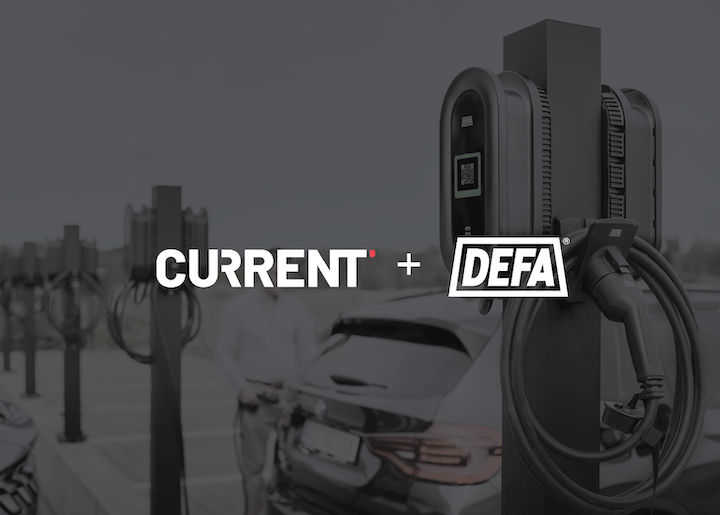
Due to the way, the electric vehicle (EV) industry is evolving, we, as experts, are able to make educated predictions on the future of EV charging. CURRENT Eco has been part of this industry in Europe since 2017, and the way public interest has advanced has been incredible to watch.
Here are some of the changes we’re expecting to see in 2023 and beyond, from changes in buyer habits to new standards to technological advancements.
Here are our predictions for 2023 and beyond.
Consolidation
Broadly, certainly in Europe, there will be consolidation and streamlining of the key actors and roles across the value chain, with a lot of mergers and acquisitions happening from 2023 onwards. This is an inevitability when an industry becomes as saturated as the EV market.
In contrast, the uptake of EVs will begin to lag, due to reduced production capacity in Asia caused by the lasting effects of COVID-19. This could give the charging infrastructure time to grow in order to better serve the number of electric cars on our roads.
Legislations and standards
Positive changes will continue to happen as Europe creeps closer to Norway in terms of creating the right landscape for EVs to be more of a way of life. Upcoming EV legislation and government involvement in the UK – such as the implementation of the LEVI fund – will inspire the EU to follow suit.
Norway is also moving forward and is inching towards launching roaming in a big way, which will also create new legislation. Roaming between charging networks will likely be handled like the telecom industry, with regulations appearing in the next couple of years. Once again, Europe is likely to follow.
Also upcoming is ISO 15118, a proposed standard defining a vehicle-to-grid (V2G) communication interface for bi-directional EV charging and discharging. V2G allows an EV to be used as a battery so power can be supplied and removed as necessary. This will end the battle between the OEMs and the energy industry on who owns the EVs’ power contract.
As businesses consolidate and the EV market grows, new legislation and standardisation will follow to ensure that the process of charging and maintaining these vehicles is as streamlined and user-friendly as possible.
Buyer habits
CURRENT data has found that 84% of respondents believed their next car would be electric (source: EV landscape whitepaper), showing that interest in EVs is continuing and will continue to grow. This is despite concerns that many nations aren’t incentivising drivers as Norway does.
Even though production remains slow, electric will become the fuel of choice for many, as our research shows that 61% of EV owners drive every day compared to 46% of ICE vehicle owners. Plus, EV owners drive further than ICE vehicle owners, with 22% of the former saying they drive 10-19km on an average journey while the majority of the latter usually drive less than 5km. For this to happen, the right investment in the charging infrastructure and a boost in range for new EVs will be required.
Creating that infrastructure is a major challenge in itself, and requires a great deal more investment. It’s estimated that 2.9 million additional public fast chargers will be required across Europe by 2030 in order to keep up with demand.
There also needs to be more of an investment in destination charging, which we expect to happen. The AC market is becoming much more valuable; customers don’t want to charge at a service station and wait with little to do for an hour – they want to come back to a fully charged car after enjoying a shopping trip or sporting event. Customer demand will ensure destination charging becomes more important across the whole of Europe.
EVs as a battery
A major shift in the industry will come from a consumer-based view on charging to a prosumer-based view, meaning the EV will be seen as both a source of energy as well as a consumer of energy. This V2G way of using EVs eases pressure on the grid and will have a huge impact on what the next generation of EVs will look like.
There will also be more discussion and use of dynamic load balancing, whereby chargers are used to balance the amount of energy they’re taking from the grid, allowing the power to be more fairly distributed.
Technology
Some of the biggest upcoming tech trends are:
- V2G: Tapping into EV vehicles as a battery is one small step for technology but a giant leap for mankind.
- Roaming: EV Roaming allows charge point operators (CPOs) to share their chargers with other operators, meaning EV drivers will no longer have to keep multiple charging apps. The use of roaming will definitely increase from 2023 onwards, as it improves the customer experience immeasurably.
- Wireless charging: This has become much more efficient and there is huge potential for a leap in battery technology. It will be a game-changer when it becomes possible.
- Central dashboards: Charger availability and the lack of cost transparency cause real anxiety for EV drivers, but a central real-time dashboard showing information from multiple operators would solve this and could become reality very soon.
Costs
The cost of energy will always be a concern for people, particularly as the energy industry continues to be affected by world events. Sooner rather than later, drivers will need more clarity when it comes to the costs of charging an EV.
The European Electric Vehicle Charging Infrastructure Masterplan from ACEA states that concerns about charging and vehicle costs are among the main barriers to EV adoption, so these points will undoubtedly be discussed more openly in the next few years.
As we look ahead, two things are certain: interest i n EVs is exploding, but we’re not entirely ready for it. The EU EV Charging Masterplan has outlined what the charging infrastructure in Europe needs and has narrowed it down primarily to:
- An investment of 8 billion EUR in public infrastructure, including installation and hardware.
- A 4 billion EUR annual cash injection for grid upgrades, amounting to around 36 billion from 2021 to 2030.
- 7 billion EUR annually to meet e-mobility energy demands via renewables.
If you’d like to learn more about the current state of the charging industry, you can click here to download our free whitepaper.




